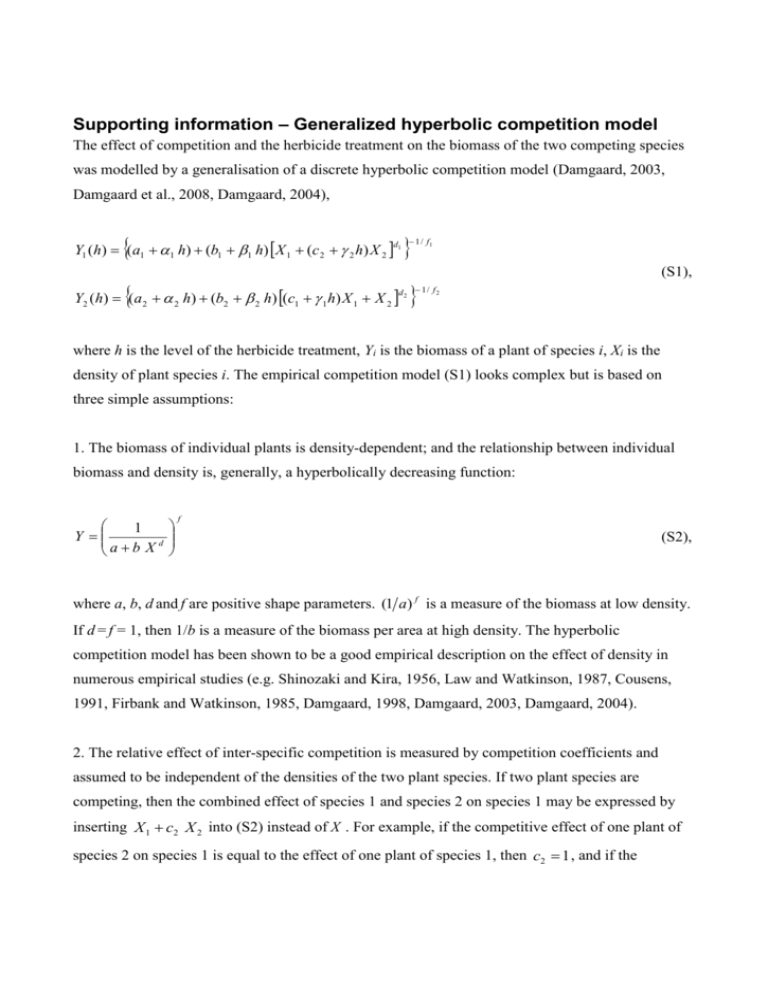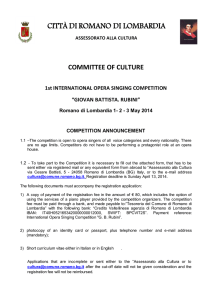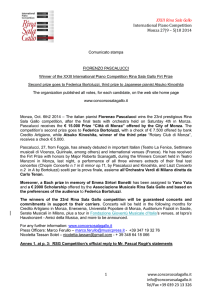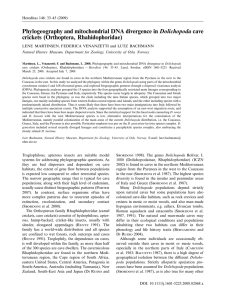JEC_1587_sm_supp_info
advertisement

Supporting information – Generalized hyperbolic competition model The effect of competition and the herbicide treatment on the biomass of the two competing species was modelled by a generalisation of a discrete hyperbolic competition model (Damgaard, 2003, Damgaard et al., 2008, Damgaard, 2004), Y1 (h) (a1 1 h) (b1 1 h) X 1 (c 2 2 h) X 2 1 d Y2 (h) (a 2 2 h) (b2 2 h) (c1 1 h) X 1 X 2 1 / f1 (S1), d2 1/ f2 where h is the level of the herbicide treatment, Yi is the biomass of a plant of species i, Xi is the density of plant species i. The empirical competition model (S1) looks complex but is based on three simple assumptions: 1. The biomass of individual plants is density-dependent; and the relationship between individual biomass and density is, generally, a hyperbolically decreasing function: 1 Y d ab X f (S2), where a, b, d and f are positive shape parameters. (1 a) f is a measure of the biomass at low density. If d = f = 1, then 1/b is a measure of the biomass per area at high density. The hyperbolic competition model has been shown to be a good empirical description on the effect of density in numerous empirical studies (e.g. Shinozaki and Kira, 1956, Law and Watkinson, 1987, Cousens, 1991, Firbank and Watkinson, 1985, Damgaard, 1998, Damgaard, 2003, Damgaard, 2004). 2. The relative effect of inter-specific competition is measured by competition coefficients and assumed to be independent of the densities of the two plant species. If two plant species are competing, then the combined effect of species 1 and species 2 on species 1 may be expressed by inserting X 1 c2 X 2 into (S2) instead of X . For example, if the competitive effect of one plant of species 2 on species 1 is equal to the effect of one plant of species 1, then c2 1 , and if the competitive effect of one plant of species 2 on species 1 is twice to the effect of one plant of species, 1 then c2 2 , 3. Within the limited domain of the conducted competition experiment, it is assumed that there is a linear effect of the herbicide on the biomass and the competitive interactions. For example, the effect of the herbicide (h) on the biomass at low density was measured by by inserting a h instead of a in (S2), and if the herbicide had a significant negative effect on the biomass at low density, then would be tested significantly higher than zero (if a in (S1) increases then Y decreases). The shape parameters d and f are assumed to be independent of the herbicide treatment. Fitting procedure The model (S1) was fitted to the average dry weight measurements after both the data and the competition model were Box-Cox-transformed y ( ) ( y 2 ) 1 1 with 1 0.8 and 2 1. After transformation, the residuals were approximately normally distributed with a homogeneous variance. To avoid negative parameter values, the parameters ai, bi, di and fi were re-parameterised with the exponential function during the fitting procedure. The competition model (S1) is quite flexible and, in many cases, the model will be overparameterised. Consequently, it was tested whether the competition model could be simplified by setting di and fi equal to one using a likelihood ratio test. Likewise, different hypotheses on the effect of the herbicide on the parameters were tested using likelihood ratio tests. The joint Bayesian posterior distribution of the parameters in the competition model was sampled using the Metropolis-Hastings algorithm with a multinomial candidate distribution (100,000 iterations with a burn-in period of 1000) assuming uniform prior distributions of the location parameters (Carlin and Louis, 1996). The sampling procedure was checked by visual inspections of the sampling chains. References Carlin, B. P. & Louis, T. A. (1996) Bayes and empirical Bayes methods for data analysis. Chapman & Hall, London. Cousens, R. (1991) Aspects of the design and interpretation of competition experiments. Weed Technology, 5, 664-673. Damgaard, C. (1998) Plant competition experiments: Testing hypotheses and estimating the probability of coexistence. Ecology, 79, 1760-1767. Damgaard, C. (2003) Modelling plant competition along an environmental gradient. Ecological Modelling, 170, 45-53. Damgaard, C. (2004) Evolutionary ecology of plant-plant interactions - an empirical modelling approach. Aarhus University Press, Aarhus, Denmark. Damgaard, C., Mathiassen, S. K. & Kudsk, P. (2008) Modelling effects of herbicide drift on the competitive interactions between weeds. Environmental Toxicology and Chemistry, 27, 1302– 1308. Firbank, L. G. & Watkinson, A. R. (1985) On the analysis of competition within two-species mixtures of plants. Journal of Applied Ecology, 22, 503-517. Law, R. & Watkinson, A. R. (1987) Response-surface analysis of two species competition: An experiment on Phleum arenarium and Vulpia fasciculata. Journal of Ecology, 75, 871-886. Shinozaki, K. & Kira, T. (1956) Intraspecific competition among higher plants. VII. Logistic theory of the C-D effect. J. Inst. Polytech, Osaka City University, 7, 35-72.


